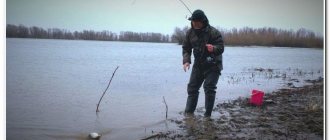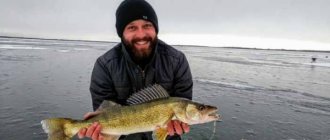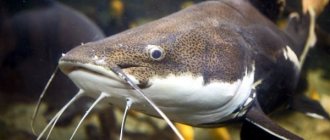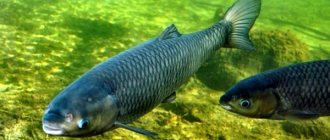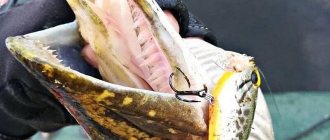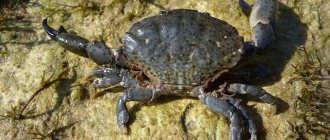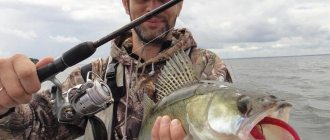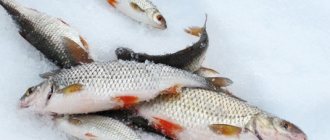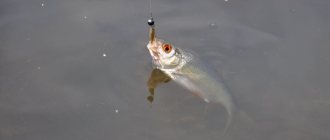Fishing for roach in the fall is no less interesting than summer trips, rich in catches and the joys of a stable bite. In addition, the autumn period is valued for the increased culinary qualities of caught fish. After all, a fattened ram differs in size and fatness compared to fish that have overwintered and spawned during the spring and summer seasons. Even if the roach is not so willing to go to the float in the fall, but knowing that you can have a decent trophy in the catches, it is worth being diligent in searching for fish and attractive bait for it.
The period of onset of cooling makes adjustments to the behavior of roach, which cannot but affect fishing strategies. The autumn months differ significantly from each other in temperature and weather stability, and these factors greatly influence the food preferences of fish and where they stay. Having understood these features, the angler will be able to confidently determine promising fishing areas and the most suitable bait for the season, thereby remaining with decent catches throughout the autumn season.
This article will give the fisherman answers to a number of important questions regarding equipment and fishing tactics, and will also help determine the preparation of effective feeding mixtures and selection of baits based on the conditions and time of the fishing session.
Roach behavior in autumn
Catching roach in the fall depends on its behavior, which in turn varies depending on the structure of the reservoir. In flowing water bodies, fish practically do not change summer stopping points until November. During this period, flocks stay in relatively shallow deep areas of the reservoir close to dense vegetation, continuing to feed in the underwater thickets themselves and at the boundaries of clear water. The fish do not go out into the currents and do not migrate, therefore, focusing on promising summer points, you can confidently continue fishing on them. With the onset of serious cold weather, even on a small river in October, flocks of roaches may begin moving to wintering grounds, which will entail a search for fishing spots closer to the pits and away from the vegetation that is beginning to rapidly rot.
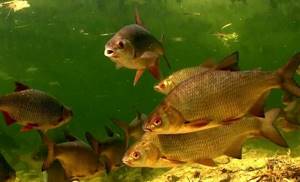
In relatively stagnant bodies of water, on lakes and reservoirs, roach behaves completely differently. With the beginning of the first cool September mornings, flocks leave the summer thicket banks on the shallows into the deep part of the lake with more oxygenated water. They return to feed on coastlines and shallows only after strong winds and rains, when the water becomes cleaner and clearer from dying algae and fresher from rising water levels. The hydrology of stagnant reservoirs forces fish to migrate early, and the fisherman to constantly search for places to feed the fish.
Lure
Bait for roaches in the fall should not contain large particles. With the onset of cold weather, the water temperature drops, which makes the roach less active and it begins to feed less. That is why it is so important to only whet the fish’s appetite, and not to feed it! The bait can be made as follows. Take 500 grams of breadcrumbs, a small amount of cake and 5 tablespoons of dry daphnia. Mix all this well.
Be sure to also add a live component to the base of the bait - small bloodworms, chopped worms, maggots, etc. When choosing a live component for bait, you need to consider what you will be fishing for. For example, if you plan to fish with a worm, then chopped worms are added to the bait. To make the mixture heavier, dry crushed clay is added to it, and oatmeal is used as a binding component for all components of the bait. Add it a little, taking into account the strength of the current. The stronger the current in the fishing area, the more oatmeal is required.
Stir the resulting mixture and gradually add water to it so that you can form balls from the bait. When preparing bait or bait, do not use tap water; it is better to take it from the place where fishing will take place. Fish don't like water that contains chlorine! If desired, you can also add any flavoring substances to the bait. But keep in mind that when catching roach in the fall, strong-smelling flavors should not be used, as this scares away the fish.
When fishing in the current, you need to make the balls stronger and scatter the bait a little higher upstream. When fishing in still water, the density of the ball of bait is made such that during the throw it does not fall apart in the air, but when it hits the water, it crumbles.
Roach bite depending on the month of fishing
The roach bite in September is stable and long-lasting, just like in the summer. The still warm waters of the reservoirs provide the fish with generous food in the thicket of underwater vegetation rich in both plankton and fresh algae. The activity of the flocks begins at sunrise and can last until sunset, stopping only in the dark period of the day.
Important! The bite is favored by sunny days with low wind strength and stable pressure within 740 atmospheres.
October days are already much shorter in terms of the intensity of the light flux, and they are not particularly encouraging with the stability of the weather with changes in atmospheric pressure, which makes the bite periodic.
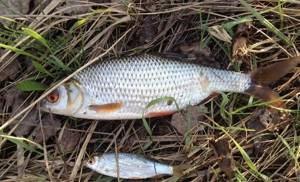
Important! On a cool October morning, the first bites can begin by 10 o’clock and this is on days with clear and windless weather. Typically, the greatest activity occurs in the afternoon, ending abruptly with the first signs of dusk.
Rainfall for several days completely stops the bite. Frosts with the formation of an edge of ice along the edges of the reservoir provide the prerequisites for increasing the intensity of the bite with the daytime heating of the water area on this fine day. It is most difficult to catch roach in November. The fish becomes unpredictable, and for unknown reasons may not show activity for several days, retreating to depth.
Important! With the relative stabilization of the weather, the duration of the daytime bite may be limited to a couple of meager hours in the afternoon. In November, cloudy but relatively warm days with no wind are considered favorable days for fishing.
Search for roach in September
The first thing you need to do when going fishing in September is to find the location of the roach. In the first days of September, when it is still quite warm outside, fish can be found in the usual summer camps. But after the first yellow leaves appear on the trees, it moves from coastal waters to the depths, settling near snags and holes at the bottom.
The most promising points for casting bait include:
- Pools near the rifts.
- Places below hydraulic structures.
- Areas with steep banks and dense vegetation.
It is better to go fishing on a cloudy day, because in clear weather the fish can clearly see everything that is happening around them and behave extremely carefully.
If September is rainy and stormy, anglers have a good chance of catching dozens of tails. At the same time, such weather conditions contribute to the pecking of trophy sorog, which leaves the sites and swims closer to the coastal areas. Such a specimen can be found at a depth of up to 1.5 m, where there are boundaries between clear and muddy water.
Read: Catching bream and roach from the surface
Small and medium-sized representatives of the species continue to live in depressions at the bottom with depths of 3-5 m.
Where to look for fish
In autumn, roach fishing on the river continues at the borders of coastal thickets with clean waters adjacent to currents. In the first half of the season, fish are looked for in windows among algae, near the crown of trees hanging over the water, and especially in places with slow currents. Schools of fish rarely go to depths of more than three meters, continuing to stay in shallow waters. Areas with snags and rubble from trees that have fallen into the water also attract roach with the opportunity to hide from a predator, where it is worth trying to catch, choosing a trajectory that is safe from snags for posting.

Catching roach in late autumn with a float rod shifts to deep-water areas of reservoirs. These places, which are often winter stops for roach schools, are fished both in dumps and directly at the very depths.
Important! In thoroughly cooled water, the roach stays closer to the bottom, rarely rising to the middle horizons and almost never reaching the surface of the reservoir.
The presence of a submerged object, driftwood, artificial construction or engineering object at the bottom of the depression concentrates fish in the immediate vicinity of the shelter and knowing the presence of such an anomaly, you can purposefully conduct both feeding and subsequent fishing with an eye on this landmark.
In autumn, nature prepares for winter and all vegetation dies off, this also applies to aquatic vegetation. And the colder the water becomes, the less algae remains in it and the water becomes clear in the absence of algae. And in clear water, the fish will see well and will be more careful about unfamiliar objects. You just need to remember this fact.
The success of fishing often depends on the chosen fishing location, fishing time and weather conditions when fishing for roach in October.
Place for roach fishing in October.
If you are at least a little familiar with fishing, then you probably already know that with the approach of winter, fish go to the depths, into holes and other depressions at the bottom of the reservoir, and roach is no exception, it also goes to the depths, looking for places to winter.
There are several types of characteristic places where roaches go to prepare for winter; depending on the body of water, these places may vary. Among the main places where roaches live in October:
Channel tables, along the edge of the channel;
Sudden changes in depth;
Deep places with muddy bottom;
Pool, more often the roach will stand in the center of the pool;
Snagged pits.
It is in the places presented above that you should look for roach in October.
Weather and time for roach fishing in October.
The weather in October is less and less likely to please us with sunshine and therefore we should not wait for clear sunny weather to go fishing. At this time, roach is already caught, both in bad weather and in sunny, clear weather.
In October, roach can be caught throughout the day, but you shouldn’t go out too early in the morning; the bite usually starts at 9 o’clock, sometimes from 10 am until noon it will be good, after lunch the activity of the roach subsides, bites become rare, but there is a bite, just with less intensity.
Tackle, bait and groundbait for catching roach in October.
To catch roach in October, different gear is used, from a regular float rod to a nodding summer fishing rod. Now let’s talk in more detail about the most popular methods of fishing for roach in October.
Catching roach in October with a float rod.
This is the most common and easiest way to catch roach in open water; both novice fishermen and more experienced fishermen catch roach in this way with success. The rigging of such a fishing rod is the most common: a fishing line, a float (it is better to use a feather), a sinker, and a hook or several hooks on the bends. At this time, it is better to use a worm, bloodworm or maggot as bait. The roach will no longer be interested in the plant bait.
The fishing method is certainly good, but in October, when the roach is at depth and usually far from the shore, such a fishing rod will simply not be able to reach it. But installing a reel and a long fishing line solves this problem.
Catching roach in October on a feeder.
Feeder fishing is becoming more and more attractive to people; in this way you can catch any peaceful fish, and therefore, especially in October, it would be a sin not to use a feeder when fishing for roach.
We wrote about the design of feeder gear in this article.
The bait when fishing for roach on a feeder in October is still the same: bloodworms, worms and maggots.
When catching roach on a feeder, you must use bait. At this time, the bait should be low-calorie, with the obligatory addition of chopped bloodworms or worms to the finished mixture. It is better to buy autumn bait for catching any fish in the store, since such mixtures are more balanced and better suited for fishing.
Catching roach with a nod rod in October.
In this way, you can fish from the shore, if the fishing point is located at a distance of 1.5 - 2 meters from the shore. You can also catch roach from a boat in October using a regular winter fishing rod.
In this method of fishing, instead of a hook, a jig is already attached; it is better to hang a drop or a pellet on the jig.
A worm or bloodworm with maggot is attached to the jig.
Well, this is where we will end today.
Autumn bait
Autumn bait for roaches has its significant differences from summer analogues of feeding mixtures. First of all, this difference lies in the obligatory presence of an animal component in the mixed feeding mixture, which during the period of warm water is not as important as in the autumn season.
Important! Bait for catching roach in the autumn is formed on a base of breadcrumbs and fish feed, without including boiled vegetable porridge and crushed cereal grains.
A distinctive feature of the preparation of bait is its fine fraction, for which crackers and mixed feed are passed through a sieve, removing all the large components. The same is done with thinners, which are soil or sand with a clay component. In cold water, attractants are used carefully, trying not to oversaturate the mixture, which can lead to the opposite effect of not luring, but scaring away fish. The bait recipe should include ingredients that help create a dusting effect, the most popular and affordable of which is milk powder. Additives of animal origin are prepared from chopped dung worms, fresh feed bloodworms or maggots.
Important! At the same time, the crushed meat of the toothless shell or pearl barley will become the animal component and an effective attractant in the bait.
Recently, canned maggot has become a popular additive, which is available to fishermen all year round in a network of stores specializing in fishing.
What to use to catch roach in autumn
The transitional autumn season forces carp to more intensively gain calories, which are so necessary for a long and relatively hungry winter. The bait for roach this season is selected from a purely animal component. If in the first ten days of September the weather is still warm and favorable for fishing with plant baits, then by the end of the month the fisherman is unlikely to enjoy fishing with sweet corn and dough, which are so familiar and reliable in attaching roach in the summer.
Important! Bloodworms and maggots come to the fore when using baits.
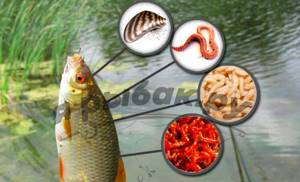
Dung worms are also of particular interest to roaches, especially if selected in small and thin form . Large specimens are advised to be torn into pieces 1–2 cm long. For inert baits, the meat of any shell that lives in the fished body of water is used for fishing. Especially attractive for ramming is the meat of the zebra mussel mollusk, which is a favorite natural delicacy in almost any body of water. It is worth focusing on combinations of animal attachments, so-called sandwiches.
Important! The use of sandwiches is actively used when the number of bites is low. The most popular combination is maggot and bloodworm.
The white larva is clamped with bloodworms in the center of the hook, making the bait both mobile and at the same time attractive in appearance.
Fishing techniques and equipment for roach
Float and bottom fishing methods are used as equipment, among which the leading role is occupied by Bolognese tackle and a feeder in the form of a picker. Under some conditions, the role of catching trophies with a plug rod is justified. Bolognese tackle is selected in lengths from 4 to 6 meters with tests of 15–25 grams. The inertia-free reel is installed with the simplest functionality. Mono fishing line is used as a cord.
Installation includes a light float, maximum 1.5 grams, with an extended antenna and a load of lead pellets distributed along the fishing line. The leash is taken 0.02 mm thinner than the base, no longer than 30 cm, completing the installation with a hook with a long shank, numbers 12–14. Picker feeder rods are equipped with a braided cord 0.12 mm thick.
With classic feeder rigs in the form of an asymmetrical and symmetrical loop, they respond to the presence of bites, guided by the activity of the fish. To reduce noise when feeding rigs, they try to use plastic feeders with a small mesh. Measures to reduce the roughness of the rigs help catch roaches in the fall using a float rod and bottom equipment. Cool autumn waters become much clearer than summer and spring waters, which are cloudy due to the intensive proliferation of algae and bacteria. This factor negatively affects bites, making the fish wary of suspicious rough rigs. Compared to summer, they begin to use thinner fishing line, moving from the classic diameter of 0.18 mm to 0.15-0.12 mm.
Roach fishing in September
In September they still fish according to the principle of summer technology, mainly using float gear. At short distances at a baited point, the plug shows particularly significant results in terms of the number of trophies.
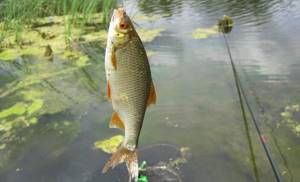
Important! Baits are fed into windows between aquatic vegetation, and if there is a current, the bait is carried out at the very edges of the junction of the thicket with clean water, holding the equipment.
It is on the holds that the overwhelming number of bites occur. Baits are carried out both in the bottom layer of water and in the middle horizons.
October roach
In the fall, roaches begin to catch the float less frequently during the October days, shifting to deeper water areas. It becomes more difficult to keep fish that have begun to migrate at the fishing point. A competent selection of feeding mixtures according to composition and their serving in portions is required, which does not contribute to saturation, but only to the attraction of the flock. Already from the second half of the month, feeder gear takes a priority position when choosing a fishing method, relegating float rigs to the background, the use of which will be justified only when roach approaches coastal zones at moments when the weather stabilizes, especially in areas of bridges and dams.
Fishing in November
November is not the most productive month for roach fishing. If the baits and groundbait remain October and do not require decisions on their refinement and a radical change in the direction of taste, then the first place comes to the search for a site for the flocks. Having found a promising fishing spot, feeder gear is used for coastal hunting. When fishing from boats, the list of equipment used, in addition to a float rod with a sliding rig, is supplemented by a nodding tackle equipped with a jig. During this period, the fish are already inactive and mostly stay at their winter mooring point. When the number of bites decreases, they are stimulated by feeding small portions of complementary food into the fishing zone, balls no larger than the size of a walnut.
Fishing rod equipment
The ideal option in our case is to use a fly rod 5-6 meters long. If the required depth is nearby, then cast several rods and install them on flyers. If the depth is further, then we use either a 7-meter fly fishing rod or a 5-meter lapdog equipped with a small inertia-free reel. With its help you will throw the tackle to the desired point.
We use thin fishing line on the fly rod. The maximum permissible cross-section in our case is 0.14 mm. Ideally, it is better to attach a low-stretch line with a diameter of 0.12 mm. On a Bolognese rod we use a fishing line with a cross section of 0.14-0.16 mm. We tie the thinnest leashes: from 0.08 to 0.1 mm. Hooks should also be small Nos. 18-22 according to international numbering. A small ball of bread and one moth or maggot will fit on such hooks. The length of the leashes is 10-15 cm.
We load the rods using a very simple method. In front of the leash loop we attach two pellets, and in front of them is a sliding weight in the shape of an olive. We use floats with a blind fastening type with a load capacity of 1.5-2 grams. It is very important that on the day of fishing the weather is calm. In this case, the floats can be lowered so that the antenna protrudes 1 cm out of the water. Roach bites at this time are very gentle. And if you do not load in the same way as indicated above, then you will miss more than half of the bites.
When fishing with a fly rod, be sure to take with you several rigs on reels. If the weather is calm, it is better to use the lightest equipment at first. Then, if wind gusts begin to pick up, install heavier rigs.
If fishing is carried out with a Bolognese rod, then in this case it is also necessary to have floats of various carrying capacities and sets of weights for them. It is better to use weights made of soft lead in the form of pellets so that they can be quickly removed and attached.
